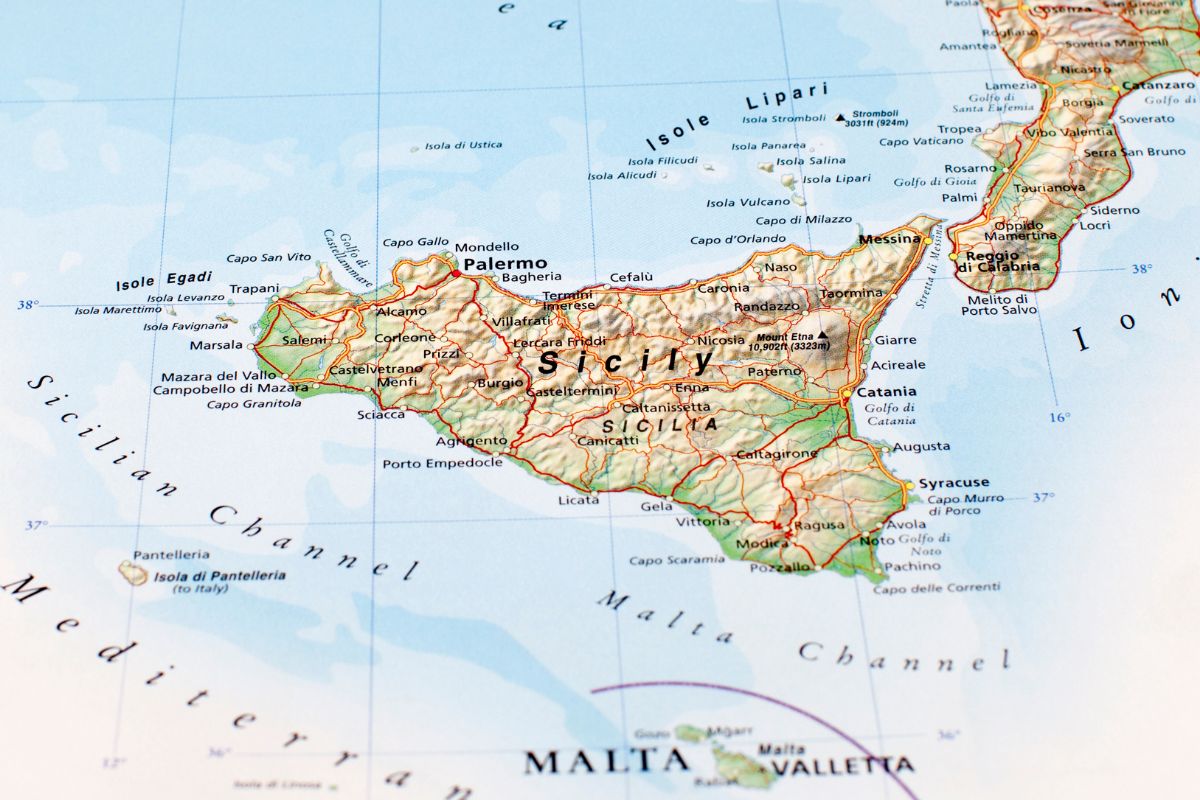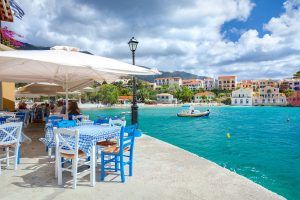Sicily, the largest island in the Mediterranean Sea, is a storehouse of historical aspects, culture, and beauty of nature. The island has majestic mountains and beautiful beaches in terms of landscape variation. However the richness of its cultural heritage is also one that cannot be taken for granted; it includes Greek temples, Roman mosaics, and Norman castles among others. Careful navigation around this fascinating island can only be achieved by employing Sicilian maps as guideposts. This article explores the map of Sicily, focusing on major towns, tourist attractions, and historic sites.
Understanding the Geography of Sicily
Sicily is located just off the “toe” of Italy’s “boot,” separated from the mainland by the narrow Strait of Messina. The island covers an area of approximately 25,711 square kilometers, making it the largest island in Italy and the Mediterranean. Sicily’s diverse geography includes:
- Mountain Ranges: There are three main mountain ranges all over Sicily: the Peloritani, the Nebrodi, and the Madonie Mountains. The highest peak on this mountain range is Mount Etna, an active volcano and one of the most significant illustrations on any map showing how big Sicily is.
- Coastlines: Sicily boasts over 1,000 kilometers of coastline, featuring sandy beaches, rocky cliffs, and charming fishing villages. The northern coast faces the Tyrrhenian Sea, the eastern coast the Ionian Sea, and the southern coast the Mediterranean Sea.
- Rivers and Lakes: While not abundant in large rivers, Sicily has several important ones, such as the Salso and the Simeto. The island also has a few notable lakes, including Lake Pergusa, known for its unique ecological characteristics.
Major Cities on the Map of Sicily
Palermo
Palermo is the main city in Sicily, found on the northwest coast. It’s a lively place with a lot of history, beautiful buildings, and busy markets. Some popular spots to visit are the Palermo Cathedral, the Norman Palace, and the bustling Ballarò Market.
Catania
Situated on the eastern coast at the foot of Mount Etna, Catania is the second-largest city in Sicily. It is known for its baroque architecture, vibrant nightlife, and proximity to the volcano. Important sites include the Catania Cathedral, the Ursino Castle, and the Roman Amphitheater.
Messina
Situated closer to the northeastern end of the Sicilian mainland, Messina is also referred to as the Sicilian gateway from Italy. Messina boasts a beautiful harbor, the Cathedral of Messina that is quite impressive and one of the world’s largest astronomical clocks.
Agrigento
Located on the southern coast, Agrigento hosts the Valley of Temples, recognized by UNESCO as one of the best preserved outside Greece. The town itself presents picturesque views over the surrounding countryside.
Historical Sites and Cultural Landmarks
There are an uncountable number of historical sites and cultural landmarks scattered across the map of Sicily which depict her diverse past. Some remarkable ones include:
Valley of the Temples
Found in Agrigento, the Valley Of The Temples represents one of the global archaeological hotspots. It has several ancient Greek temples including a very well-maintained Temple Of Concordia.
Mount Etna
Mount Etna is Europe’s highest and most active volcano. It is a UNESCO World Heritage site and offers unique opportunities for hiking, skiing, and exploring its lunar-like landscapes.
Aeolian Islands
The Aeolian Islands are a group of islands off the northeastern coast of Sicily that are recognized as UNESCO World Heritage sites. They have volcanic activity, clear waters, and different kinds of landscapes. Lipari Stromboli and Vulcano are popular places to visit while there.
Taormina
Also known for its stunning views over the Ionian Sea from a hilltop position is Taormina. The charming streets and ancient Greek Theatre still used for performances give it away.
Natural Attractions
Sicily’s natural beauty in the form of parks, reserves, and scenic landscapes are equally captivating. Key natural attractions on the map of Sicily include:
Madonie Regional Natural Park
For hikers and people who love nature, North Sicily hosts Madonie Park which has diverse flora & fauna; picturesque villages/communities plus Pizzo Carbonara which becomes the second-highest peak in Sicily.
Vendicari Nature Reserve
Still located on the south-eastern coast Vendicari Nature Reserve is a coastal oasis renowned for its clean beaches, salt pans as well as birdwatching. For those who seek peace and natural beauty, this site is perfect.
Practical Tips for Exploring Sicily
Getting Around
Using a good map of Sicily can make for an enjoyable exploration of Sicily. There is public transport between major cities although sometimes the best way to reach hidden gems or the most remote parts of the island would be to hire a car.
Best Time to Visit
Spring and autumn, from April to June and September to October, are the ideal times to visit Sicily. The weather is pleasant and there are fewer crowds. However, during the summer months of July and August, it can get hot and crowded, especially near the coast.
Local Cuisine
The highlight of any visit to Sicily is her cuisine. Some local delicacies not to miss are arancini, cannoli, and granita among others. Fresh seafood and local wine also provide unforgettable experiences.
Conclusion
A map of Sicily doesn’t just help with directions; it’s a key that opens doors into history, culture, and nature that shapes the land. From Palermo’s busy streets to the Aeolian Islands’ calm beaches, there are so many different things that you will find in Sicily depending on the type of person you are. Whether you love ancient ruins, outdoor activities, or simply lying down in beautiful scenery, going through Sicily will stick in your mind forever.











